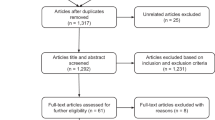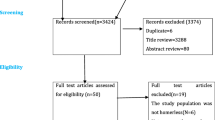Abstract
Schizophrenia is a choronic, complex and powerfully inherited mental illness that seriously affects quality of life. The illness is one of the most researched psychiatric disorders from past to present. This study aims to provide a holistic summary of the global scientific outputs through bibliometric analyses and reveal the trend topics. The articles published between the years 1975 and 2020 were downloaded from the Web of Science (WoS) database and analyzed using bibliometric methods. The literature review was conducted using the keyword ‘‘schizophren*’’ in the ‘‘Research Area’’ category. The relation between the number of publications of the countries and the Gross Domestic Products and Human Development Index values were analyzed using Spearman’s correlation coefficient. The number of articles between the years 2021 and 2032 was estimated through linear regression analysis.There were 103,992 publications, 51,117 of which were articles. The number of studies has increased in direct proportion to the development level of the countries. Schizophrenia Research was the most active journal. The most used research topics are cognition, negative symptoms, bipolar disorder, antipsychotics, depression, clozapine, quality of life. Trend keywords used in recent years are ‘inflammation’, ‘biomarker’, ‘oxidative stress’, ‘Brain Derived Neurotrophic Factor (BDNF)’, ‘social cognition’, ‘metacognition’, ‘motivation’, ‘social functioning’, ‘functioning’, ‘mental health’, ‘metabolic syndrome’, ‘functional connectivity’, ‘adherence’ and ‘recovery’ indicated new research frontiers in this field. Although schizophrenia has not been fully elucidated, studies are growing like an avalanche. Our study includes the most up-to-date and most comprehensive data ever made in this field.







Similar content being viewed by others
References
American Psychiatric Association. Diagnostic and statistical manual of mental disorders (4th ed., text rev.). Washington, DC; 2020.
Maroney M. An update on current treatment strategies and emerging agents for the management of schizophrenia. Am J Manag Care. 2020;26(3 Suppl):55–61. https://doi.org/10.37765/ajmc.2020.43012.
McCutcheon RA, Marques TR, Howes OD. Schizophrenia—an overview. JAMA Psychiat. 2020;77(2):201–10. https://doi.org/10.1001/jamapsychiatry.2019.3360.
Leucht S, Burkard T, Henderson J, Maj M, Sartorius N. Physical illness and schizophrenia: a review of the literature. Acta Psychiatr Scand. 2007;116(5):317–33. https://doi.org/10.1111/j.1600-0447.2007.01095.x.
Van Os J, Kapur S. Schizophrenia Lancet. 2009;374:635–45. https://doi.org/10.1016/S0140-6736(09)60995-8.
Chien IC, Chou YJ, Lin CH, Bih SH, Chou P, Chang HJ. Prevalence and incidence of schizophrenia among national health insurance enrollees in Taiwan, 1996–2001. Psychiatry Clin Neurosci. 2004;58:611–8. https://doi.org/10.1111/j.1440-1819.2004.01311.x.
Wu EQ, Shi L, Birnbaum H, Hudson T, Kessler R. Annual prevalence of diagnosed schizophrenia in the USA: a claims data analysis approach. Psychol Med. 2006;36:1535–40. https://doi.org/10.1017/S0033291706008191.
Cho SJ, Kim J, Kang YJ, Lee SY, Seo HY, Park JE, et al. Annual prevalence and incidence of schizophrenia and similar psychotic disorders in the Republic of Korea: a national health insurance data-based study. Psychiatry investig. 2020;17(1):61. https://doi.org/10.30773/pi.2019.0041.
Messias EL, Chen CY, Eaton WW. Epidemiology of schizophrenia: review of findings and myths. Psychiatr Clin North Am. 2007;30(3):323–38. https://doi.org/10.1016/j.psc.2007.04.007.
Millier A, Schmidt U, Angermeyer MC, Chauhan D, Murthy V, Toumi M, et al. Humanistic burden in schizophrenia: a literature review. J Psychiatr Res. 2014;54:85–93. https://doi.org/10.1016/j.jpsychires.2014.03.021.
Merigó JM, Gil-Lafuente AM, Yager RR. An overview of fuzzy research with bibliometric indicators. Appl Soft Comput. 2015;27:420–33.
Astraud LP, Bridge JA, Jollant F. Thirty years of publications in suicidology: a bibliometric analysis. Arch Suicide Res. 2020. https://doi.org/10.1080/13811118.2020.1746944.
Hao T, Chen X, Li G, Yan J. A bibliometric analysis of text mining in medical research. Soft Comput. 2018;22(23):7875–92.
Van Eck NJ, Waltman L. Software survey: VOSviewer, a computer program for bibliometric mapping. Scientometrics. 2010;84(2):523–38. https://doi.org/10.1007/s11192-009-0146-3.
Kay SR, Fiszbein A, Opler LA. The positive and negative syndrome scale (PANSS) for schizophrenia. Schizophr Bull. 1987;13(2):261–76. https://doi.org/10.1093/schbul/13.2.261.
Kaufman J, Birmaher B, Brent D, Rao UMA, Flynn C, Moreci P, et al. Schedule for affective disorders and schizophrenia for school-age children-present and lifetime version (K-SADS-PL): initial reliability and validity data. J Am Acad Child Adolesc Psychiatry. 1997;36(7):980–988. https://doi.org/10.1097/00004583-199707000-00021.
Lieberman JA, Stroup TS, McEvoy JP, Antipsychotic Trials of Intervention Effectiveness (CATIE) Investigators. Effectiveness of antipsychotic drugs in patients with chronic schizophrenia. N Engl J Med. 2005;353(12):1209–1223. https://doi.org/10.1056/NEJMoa051688.
Ripke S, Neala, BM, Corvin A, Walters JTR, Farh KH, Holmans PA, et al. Schizophrenias Working Group of the Psychiatric Genomics Consortium. Biological insights from 108 schizophrenia-associated genetic loci. Nature 2014;511(7510):421–427. https://doi.org/10.1038/nature13595.
Kane J, Honigfeld G, Singer J, Meltzer H. Clozapine for the treatment-resistant schizophrenic: a double-blind comparison with chlorpromazine. Arch Gen Psychiatry. 1988;45(9):789–96.
Purcell S, Wray NR, Stone JL, Visscher PM, O’Donovan MC, Sullivan PF, et al. Common polygenic variation contributes to risk of schizophrenia and bipolar disorder. Nature. 2009;460:748–52. https://doi.org/10.1038/nature08185.
Green MF. What are the functional consequences of neurocognitive deficits in schizophrenia? Am J Psychiatry. 1996;153(3):321–30. https://doi.org/10.1176/ajp.153.3.321.
Javitt DC, Zukin SR. Recent advances in the phencyclidine model of schizophrenia. Am J Psychiatry. 1991;148(10):1301–8. https://doi.org/10.1176/ajp.148.10.1301.
Green MF, Kern RS, Braff DL, Mintz J. Neurocognitive deficits and functional outcome in schizophrenia: are we measuring the “right stuff”? Schizophr Bull. 2000;26(1):119–36. https://doi.org/10.1093/oxfordjournals.schbul.a033430.
Heinrichs RW, Zakzanis KK. Neurocognitive deficit in schizophrenia: a quantitative review of the evidence. Neuropsychology. 1998;12(3):426. https://doi.org/10.1037/0894-4105.12.3.426.
Egan MF, Goldberg TE, Kolachana BS, Callicott JH, Mazzanti CM, Straub RE, et al. Effect of COMT Val108/158 Met genotype on frontal lobe function and risk for schizophrenia. Proc Natl Acad Sci U S A. 2001;98(12):6917–22. https://doi.org/10.1073/pnas.111134598.
Andreasen NC, Olsen S. Negative v positive schizophrenia: Definition and validation. Arch Gen Psychiatry. 1982;39(7):789–94. https://doi.org/10.1001/archpsyc.1982.04290070025006.
Weinberger DR, Berman KF, Zec RF. Physiologic dysfunction of dorsolateral prefrontal cortex in schizophrenia. I. Regional cerebral blood flow evidence. Arch Gen Psychiatry. 1986;43(2):114–24. https://doi.org/10.1001/archpsyc.1986.01800020020004.
Andreasen NC. Negative symptoms in schizophrenia. Definition and reliability Arch Gen Psychiatry. 1982;39(7):784–8. https://doi.org/10.1001/archpsyc.1982.04290070020005.
Sullivan PF, Kendler KS, Neale MC. Schizophrenia as a complex trait: evidence from a meta-analysis of twin studies. Arch Gen Psychiatry. 2003;60(12):1187–92. https://doi.org/10.1001/archpsyc.60.12.1187.
Ripke S, Sanders AR, Kendler KS, Yang JC, Tanasa B, Li WWH, et al. Genome-wide association study identifies five new schizophrenia loci. Nat Genet. 2011;43(10):969. https://doi.org/10.1038/ng.940.
Leucht S, Cipriani A, Spineli L, Mavridis D, Örey D, Richter F, et al. Comparative efficacy and tolerability of 15 antipsychotic drugs in schizophrenia: a multiple-treatments meta-analysis. Lancet. 2013;382(9896):951–62.
Heinrichs DW, Hanlon TE, Carpenter WT Jr. The Quality of Life Scale: an instrument for rating the schizophrenic deficit syndrome. Schizophr Bull. 1984;10(3):388–98. https://doi.org/10.1093/schbul/10.3.388.
Stefansson H, Rujescu D, Cichon S, et al. Large recurrent microdeletions associated with schizophrenia. Nature. 2008;455:232–6. https://doi.org/10.1038/nature07229.
Walsh T, McClellan JM, McCarthy SE, Addington AM, Pierce SB, Cooper GM, et al. Rare structural variants disrupt multiple genes in neurodevelopmental pathways in schizophrenia. Science. 2008;320(5875):539–43. https://doi.org/10.1126/science.1155174.
Stefansson H, Sigurdsson E, Steinthorsdottir V, Bjornsdottir S, Sigmundsson T, Ghosh S, et al. Neuregulin 1 and susceptibility to schizophrenia. Am J Hum Genet. 2002;71(4):877–92. https://doi.org/10.1086/342734.
Lichtenstein P, Yip BH, Björk C, Pawitan Y, Cannon TD, Sullivan PF, et al. Common genetic determinants of schizophrenia and bipolar disorder in Swedish families: a population-based study. Lancet. 2009;373(9659):234–9. https://doi.org/10.1016/S0140-6736(09)60072-6.
Leucht S, Corves C, Arbter D, Engel RR, Li C, Davis JM. Second-generation versus first-generation antipsychotic drugs for schizophrenia: a meta-analysis. Lancet. 2009;373(9657):31–41. https://doi.org/10.1016/S0140-6736(08)61764-X.
Wright IC, Rabe-Hesketh S, Woodruff PW, David AS, Murray RM, Bullmore ET. Meta-analysis of regional brain volumes in schizophrenia. Am J Psychiatry. 2000;157(1):16–25. https://doi.org/10.1176/ajp.157.1.16.
Stefansson H, Ophoff RA, Steinberg S, Andreassen OA, Cichon S, Rujescu D, et al. Common variants conferring risk of schizophrenia. Nature. 2009;460(7256):744–7. https://doi.org/10.1038/nature08186.
Marder SR, Meibach RC. Risperidone in the treatment of schizophrenia. Am J Psychiatry. 1994;151(6):825–35. https://doi.org/10.1176/ajp.151.6.825.
Stone JL, et al. International Schizophrenia Consortium. Rare chromosomal deletions and duplications increase risk of schizophrenia. Nature. 2008;455(7210):237–41. https://doi.org/10.1038/nature07239.
Braff DL, Geyer MA. Sensorimotor gating and schizophrenia. Human and animal model studies. Arch Gen Psychiatry. 1990;47(2):181–8. https://doi.org/10.1001/archpsyc.1990.01810140081011.
Carpenter WT Jr, Heinrichs DW, Wagman AM. Deficit and nondeficit forms of schizophrenia: the concept. Am J Psychiatry. 1988;145(5):578–83. https://doi.org/10.1176/ajp.145.5.578.
Cohen JD, Servan-Schreiber D. Context, cortex, and dopamine: a connectionist approach to behavior and biology in schizophrenia. Psychol Rev. 1992;99(1):45–77. https://doi.org/10.1037/0033-295x.99.1.45.
Liddle PF. The symptoms of chronic schizophrenia. A re-examination of the positive-negative dichotomy. Br J Psychiatry. 1987;151:145–51. https://doi.org/10.1192/bjp.151.2.145.
Glantz LA, Lewis DA. Decreased dendritic spine density on prefrontal cortical pyramidal neurons in schizophrenia. Arch Gen Psychiatry. 2000;57(1):65–73. https://doi.org/10.1001/archpsyc.57.1.65.
American Psychological Association. Diagnostic and statistical manual of mental disorders fourth edition: DSM-IV. Washington, DC; 1994.
Overall JE, Gorham DR. The brief psychiatric rating scale. Psychological reports. 1962;10(3):799–812. https://doi.org/10.2466/pr0.1962.10.3.799.
American Psychiatric Association. Diagnostic and statistical manual of mental disorders (3rd ed., rev.). Washington, DC; 1987.
Andreasen NC. Scale for the assessment of positive symptoms (SAPS). Iowa City: University of Iowa; 1984.
Andreasen NC. Scale for the assessment of negative symptoms (SANS). Iowa City: University of Iowa; 1983.
Weinberger DR. Implications of normal brain development for the pathogenesis of schizophrenia. Arch Gen Psychiatry. 1987;44(7):660–9. https://doi.org/10.1001/archpsyc.1987.01800190080012.
Oldfield RC. The assessment and analysis of handedness: The Edinburgh inventory. Neuropsychologia. 1971;9(1):97–113. https://doi.org/10.1016/0028-3932(71)90067-4.
Sheehan DV, Lecrubier Y, Sheehan KH, Amorim P, Janavs J, Weiller E, et al. The Mini-International Neuropsychiatric Interview (MINI): the development and validation of a structured diagnostic psychiatric interview for DSM-IV and ICD-10. J Clin Psychiatry. 1998;59(20):22–33.
Woods SW. Chlorpromazine equivalent doses for the newer atypical antipsychotics. The J Clin Psychiatry. 2003;64(6):663–7. https://doi.org/10.4088/jcp.v64n0607.
Kiraz M. A Holistic Investigation of Global Outputs of Covid-19 Publications in Neurology and Neurosurgery. EJMI. 2020;4(4):506–12. https://doi.org/10.14744/ejmi.2020.36601.
Golpinar M, Demir E. Global research output of the cerebellum: Yesterday, today, and tomorrow. Journal of the Anatomical Society of India. 2020;69(3):155. https://doi.org/10.4103/JASI.JASI_114_20.
Sekar A, Bialas AR, De Rivera H, Davis A, Hammon TR, Kamitaki N, et al. Schizophrenia risk from complex variation of complement component 4. Nature. 2016;530(7589):177–83. https://doi.org/10.1038/nature16549.
Fromer M, Pocklington AJ, Kavanagh DH, Williams HJ, Dwyer S, & Gormley P. De novo mutations in schizophrenia implicate synaptic networks. Nature. 2014;506(7487):179-184. https://doi.org/10.1038/nature12929.
Purcell SM, Moran JL, Fromer M, Ruderfer D, Solovieff N, Roussos P, et al. polygenic burden of rare disruptive mutations in schizophrenia. Nature. 2014;506(7487):185–90. https://doi.org/10.1038/nature12975.
Yang Y, Liu Y, Wang G, Hei G, Hei G, Wang X, et al. Brain-derived neurotrophic factor is associated with cognitive impairments in first-episode and chronic schizophrenia. Psychiatry Res. 2019;273:528–36. https://doi.org/10.1016/j.psychres.2019.01.051.
Zhu S, Zhao L, Fan Y, Lv Q, Wu K, Lang X, et al. Interaction between TNF-α and oxidative stress status in first-episode drug-naïve schizophrenia. Psychoneuroendocrinology. 2020;114:104595. https://doi.org/10.1016/j.psyneuen.2020.104595.
Kato TA, Monji A, Mizoguchi Y, Hashiok S, Horikawa H, Seki Y, et al. Anti-Inflammatory properties of antipsychotics via microglia modulations: are antipsychotics a ‘fire extinguisher’in the brain of schizophrenia? Mini Rev Med Chem. 2011;11(7):565–74. https://doi.org/10.2174/138955711795906941.
Juncal-Ruiz M, Riesco-Dávila L, de la Foz VOG, Ramírez-Bonilla M, Martínez-García O, Irure-Ventura J, et al. The effect of excess weight on circulating inflammatory cytokines in drug-naïve first-episode psychosis individuals. J Neuroinflammation. 2018;15(1):1–8. https://doi.org/10.1186/s12974-018-1096-6.
Kowalchuk C, Kanagasundaram P, McIntyre WB, Belsham DD, Hahn MK. Direct effects of antipsychotic drugs on insulin, energy sensing and inflammatory pathways in hypothalamic mouse neurons. Psychoneuroendocrinology. 2019;109109:104400. https://doi.org/10.1016/j.psyneuen.2019.104400.
Fond G, Lançon C, Korchia T, Auquier P, Boyer L. The role of inflammation in the treatment of schizophrenia. Front Psychiatry. 2020;11:160. https://doi.org/10.3389/fpsyt.2020.00160.
Nasib LG, Gangadin SS, Winter-van Rossum I, Boudewijns ZS, de Witte LD, Wilting I, et al. The effect of prednisolone on symptom severity in schizophrenia: A placebo-controlled, randomized controlled trial. Schizophr Res. 2021;230:79–86. https://doi.org/10.1016/j.schres.2021.01.024.
Author information
Authors and Affiliations
Corresponding author
Ethics declarations
Ethical Approval
This article does not contain any studies with human parti-cipants or animals performed by any of the authors.
Informed Consent
For this type of study formal consent is not required.
Conflict of Interest
The authors declare no conflicts of interest.
Additional information
Publisher's Note
Springer Nature remains neutral with regard to jurisdictional claims in published maps and institutional affiliations.
Rights and permissions
About this article
Cite this article
Kiraz, S., Demir, E. Global Scientific Outputs of Schizophrenia Publications From 1975 to 2020: a Bibliometric Analysis. Psychiatr Q 92, 1725–1744 (2021). https://doi.org/10.1007/s11126-021-09937-4
Accepted:
Published:
Issue Date:
DOI: https://doi.org/10.1007/s11126-021-09937-4




